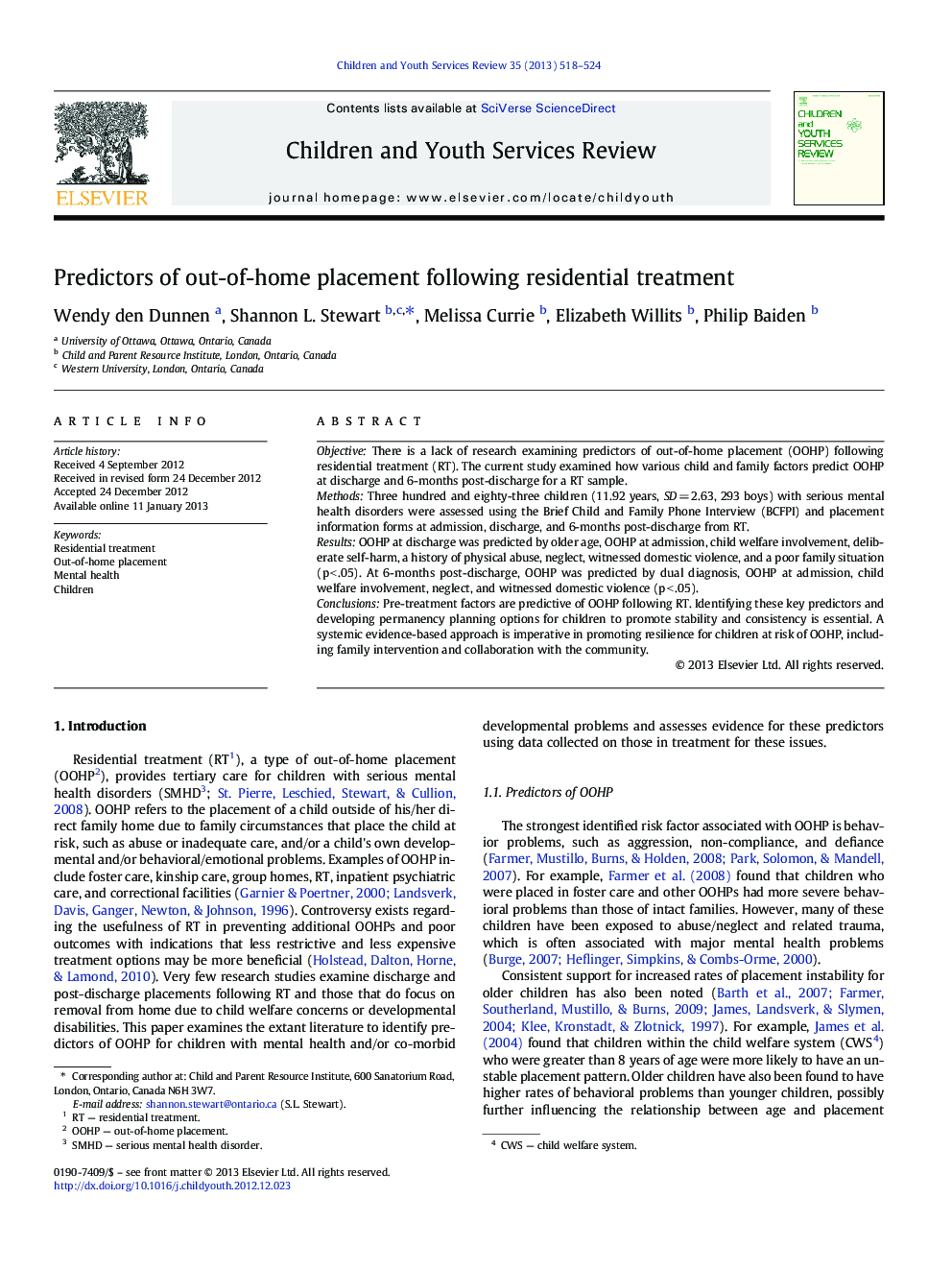| Article ID | Journal | Published Year | Pages | File Type |
|---|---|---|---|---|
| 346419 | Children and Youth Services Review | 2013 | 7 Pages |
ObjectiveThere is a lack of research examining predictors of out-of-home placement (OOHP) following residential treatment (RT). The current study examined how various child and family factors predict OOHP at discharge and 6-months post-discharge for a RT sample.MethodsThree hundred and eighty-three children (11.92 years, SD = 2.63, 293 boys) with serious mental health disorders were assessed using the Brief Child and Family Phone Interview (BCFPI) and placement information forms at admission, discharge, and 6-months post-discharge from RT.ResultsOOHP at discharge was predicted by older age, OOHP at admission, child welfare involvement, deliberate self-harm, a history of physical abuse, neglect, witnessed domestic violence, and a poor family situation (p < .05). At 6-months post-discharge, OOHP was predicted by dual diagnosis, OOHP at admission, child welfare involvement, neglect, and witnessed domestic violence (p < .05).ConclusionsPre-treatment factors are predictive of OOHP following RT. Identifying these key predictors and developing permanency planning options for children to promote stability and consistency is essential. A systemic evidence-based approach is imperative in promoting resilience for children at risk of OOHP, including family intervention and collaboration with the community.
► Examined predictors of out-of-home placement (OOHP) post residential treatment ► Child/family factors predicted OOHP at discharge and 6-months post-discharge ► Prevention efforts for domestic violence and abuse within the home are needed ► Care plans prior to admission, based on child/family risk factors, are essential.
